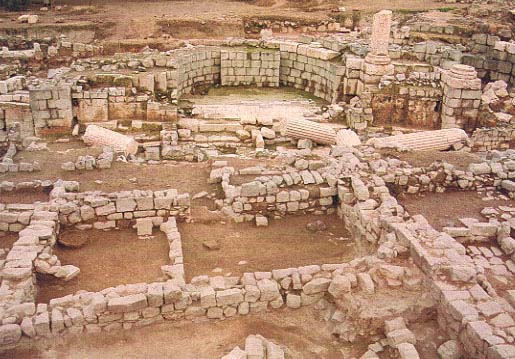Image Details

Gabi Laron/Institute of Archaeology, Hebrew University
The sparkling waters of a fountain, or nymphaeum, delighted the people of Beth-Shean during the Byzantine period. First built in the second century A.D., next to the temple, the chief feature of the fountain structure was an open-air semicircular apse (top, center). Today the apse is preserved to a height of nearly 10 feet. On either side of the apse, projecting structures supported 23-foot-high fluted columns topped with ornate, 3-foot-high Corinthian capitals. Segments of the fluted columns lie on the ground.
The nymphaeum may have been a fountain even in the Roman period, or it may have been a purely decorative element converted into a fountain in the late fourth century A.D. In the foreground are remains of a residential quarter dating to the Mameluke period (13th to 16th centuries A.D.).
